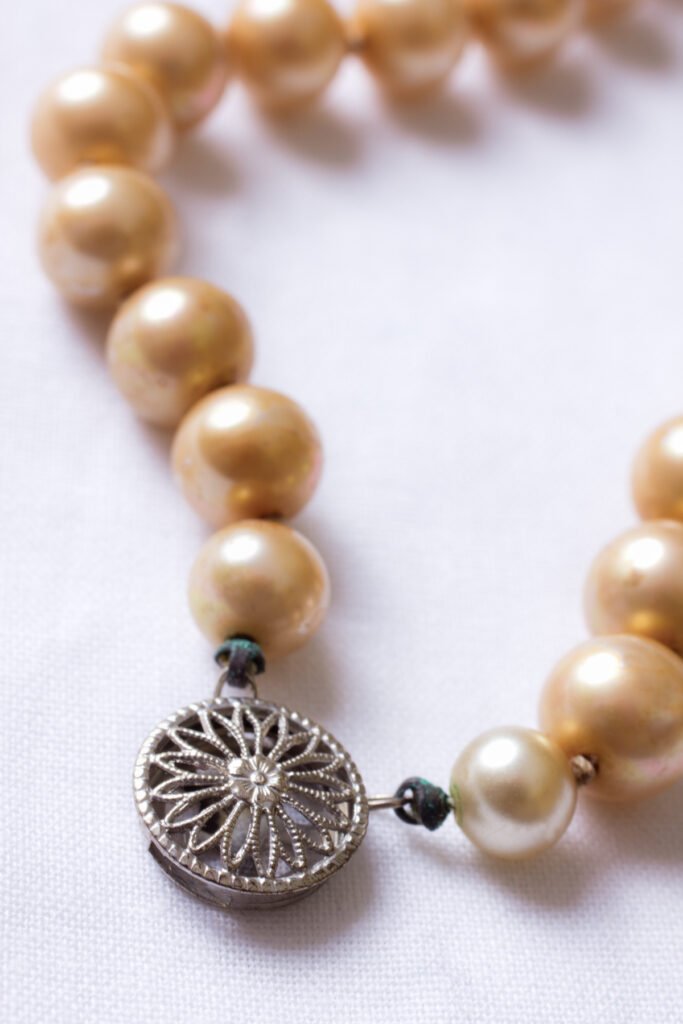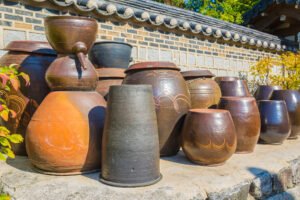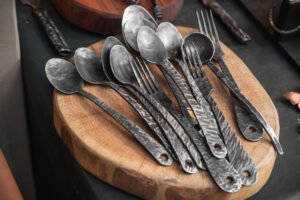Do you love antiques but are short of space to store them? We get you! In fact, in today’s WFH scenarios, even our rooms are a mess! But hey! Why pick large antiques like pitchers and bottles when even tiny pieces like necklace flasks make up a good investment?
But every investment needs returns, right? And to get them, your clasp must be old, unique, and hallmarked. And you don’t need to rush to any expert to know that! Today, I’ll help you spot and price your old necklace clasp yourself!
Key Takeaways
- For good returns, pick clasps with hand-beaten metal rings, bars, and carvings. But if you want the new, usable ones, even branded, Art Deco ones are a wise choice!
- You’ll get antique necklace clasps in four types – barrel, hook, box, and lobster. Of these, the hook and box ones are rare, while others are cheap.
- Get iron, gold, or silver jewelry clasps for fast resale. Remember to check their hallmarks and stamps to increase costs.
- Opt for bare-metal, push, or sliding clasps if you want it handmade! And get the 1900s, screwed ones if you want a machine polish.
Key Signs That a Necklace Clasp Is Old & Antique

Take your necklace flask and hold it between your fingers. Now, open the clasp, put a magnifier over it, and check its ends. If they look v, square, or point-like, it’s an old clasp costing $200 – 300. Also, check its hallmarks for confirmation!
But what if your clasps are rusty and don’t have any hallmarks? Well, in that case, you can check out these features!
- Metal jump, rings, chain tags, and pins with stamped signs and logos
- Iron, Brass, and Alloyed Steel walls with grooved edges and fittings
- 11-12 mm clasps with a 6 mm holder or toggle bar
- Carved, Beaded, or Gem-fitted faces with hand-polished or gold-plated rings
An Overview of Old Necklace Clasps’ History
We all loved making simple thread knot jewelry as kids, right? But do you know that the Egyptians used a similar method for the first clasp? They simply used hand-beaten hooks and crude bone or hide rings. So yes, this handmade one obviously resells fast!
Next come the metals! And since it was the royal era, you’d get boxy and loud clasps in this era. But these pure, raw metals lose shine and turn brownish with age. So, their cost drops to $400 – 500. Despite that, you’ll get a good value if your clasp has emeralds and pearls!
The later 1900s pop era was fancier. Like, people wanted all those branded push-style or barrel clasps for easy use! So, makers mechanized the process and added springs to operate the clip. But now, they had no hand touch and were cheaper than before!
4 Important Antique Jewelry Clasps Types (With Values)
Did your antique shop bombard you with too many clasp designs? Well, don’t worry! You can sort them as per these four types to know their use and average price!
1. Barrel Clasp

As you might guess, barrel clasps are just two grooved cylinders with screws in between. You’ll also see small spring-loaded foam walls and rings on their outer ends. But since they brush regularly, they have high friction. So, they don’t cost more than $30.
2. Hook Clasps

Hook clasps are like a simple hook and ring that secures your necklace from both ends. These are very crude, roughly from the 1700s, and are often rusty or dented. Also, check the shape of your hook; if it’s straight, it costs $100 – 125, but if it’s curved, it costs $50 – 60.
3. Box Clasps
Check if your old clasp has a 2-3 mm clip on one end and a hollow cuboid on the other. If yes, it’s a box clasp! Such clasps are 11 – 12 mm tall and have golden walls with shiny gems. Plus, you’ll also see carved faces and ends, costing up to $200.
4. Lobster Claw Clasps
Lobster claw clasps look just like a keychain ring, with a lever at the top. They are thin and compact but have better security and grip than others. Most lobster claw clasps also have rotating bottom pins for better fixing. But since they are new, they cost only up to $50.
7 Factors to Identify & Value Vintage Necklace Clasps
Let’s move on to more details now! Observe the given features in your piece and add the values from our tables!
1. Manufacturing Date & Age

If you want high returns for your clasp, better stick to the early 1700s models. It’s just that they won’t be usable! So if you want working ones, pick clips from the early 1800s! And if you love fancy gems, the 1900s clasps are best! These new ones will obviously be cheap!
But most necklace clasps are too small to have a date! So, I’ll tell you how you can estimate their age yourself!
How Do You Spot a 1700s Necklace Clasp?
If your clasp has simple hooks, boxes, or a beaten finish, it must be from the 1700s! You’ll also see crude, unpolished ends and rings costing $600 – 700. Plus, there won’t be any loops or wires; they’ll be directly attached to their threads!
How Do You Spot Old Necklace Clasps from the 1800s?
Check if your necklace clasp hints at machine work – polished rivets, rings, and hooks. Also, check its faces; if they look carved and circular, it’s an 1800s clasp! You’ll also see typical regional and religious carvings on these, which are local and cost up to $500.
How Does a 1900s Necklace Clasp Look?
Look for polished silver or steel clasps to spot these! You can also check if they have newer chains, jump rings, and trademarks. Next, rotate the piece and see if you get any logos or patent numbers on its face. If yes, it’s branded, costing $300 – 400. If not, $100 is enough!
Here are some vintage clasp patent numbers for help!
| Year | Age | Patent Number | Average Valuation |
| 1900s | 123 years | US3350753A | $80 – 120 |
| 1950s | 73 years | US2858593A | $50 – 60 |
| 1930s | 93 years | 1801128 | $70 – 100 |
Pick clasps with multi-thread necklaces or chains for an old make.
2. Clasp Materials

Get a caliper and check your clasp’s thickness and shine. If your pin looks matte and is 3 – 4mm thick, it might be stone or bone. But if it’s only 1-2 mm thick, with an oxidized finish, it might be cast iron! You can price such clips for $200 – 300.
On the other hand, get the gold or silver ones if you love luxurious pieces! And if you want cheap but shiny clasps, the steel ones are for you!
Want to know the exact value of each clasp material? Here’s a list!
| Old Necklace Clasp Materials | Average Valuation |
| Stone, Bone, or Thread Balls | $300 – 500 |
| Cast Iron & Alloyed Steel | $200 – 300 |
| Gold or Silver | $300 – 500 |
| Brass, Bronze, or Copper | $75 – 100 |
| Stainless Steel, Zinc & Alloys | $40 – 50 |
Pick necklace clasps with a brushed, hammered, or lacquered finish for more value.
3. Hallmarks & Brand Marks

Are you still unsure about your necklace clasp materials? Simply unscrew it and check for any stamped numbers or hallmarks on its face. And if you see them, you can hike the costs by 20%. Also, see if you get a ‘Made in USA’ stamp, which hints at an old, silver make.
Here’s a table for the value of each hallmark!
| Old Necklace Clasp Hallmarks | Average Valuation |
| Gold – 14k, 16k, 18k, 750, 585 | $600 – 1000 |
| Silver – Sterling or 925 | $400 – 500 |
| Made in USA or Made in England | $200 – 300 |
| Assay Mark (Birmingham) | $200 – 300 |
Get vintage clasps with a designer crown, sun, or animal hallmark for rare, royal origins.
4. Brands & Manufacturers
You don’t need to run after old, handmade pieces every time! Even new, branded pieces are in demand and precious. So, to check your clip’s brand, just look for any logos or codes under the hallmark. Also, look for precious stone motifs and a shiny finish!
And if you see them, refer to our list below for the costs!
| Old Necklace Clasp Name | Manufacturer | Average Valuation |
| Canary Crystal Screw Clasp | La Petite | $150 – 160 |
| Egg Style Gold Crystal | Faberge | $40 – 50 |
Avoid getting chipped or dented necklace clasps as they might lose their value by 10 – 15%.
5. Clasp Mechanism

You’ll get old necklace clasps with four locking techniques – push, sliding, spring, and screw. Of these, the push and sliding clasps are old, costing $200 – 300. But if you see screws and springs, it might be a new clasp, costing up to $100. So, choose wisely!
6. Clasp Style
Take a magnifying glass and check the carvings on your old clasp. If they look floral or geometrical, it might be an Art Deco or Baroque clasp from the late 1800s. If it shows regional samurais or animals, it might be new and Asian. But such pins are fancier!
And here’s a table if you want to know the exact value of your clip style!
| Old Necklace Clasp Style | Average Valuation |
| Art Nouveau or Art Deco | $100 – 150 |
| Chinese ( Round or Curved) | $100 – 150 |
| Asian or East European | $80 – 100 |
| Japanese or Samurai | $70 – 80 |
| Victorian or Baroque | $150 – 200 |
Try getting jewelry clasps with their original pearls or beads to hike costs by 10 – 12%.
7. Colors
Does your vintage clasp have a brushed brown or gray surface? Or is it black, white, or orange? If it’s brown or gray, it might be a bare metal or stone clasp, costing $400 – 500. But if it has any other colored layer, it might be oxidized, costing $100 – 300.
Avoid getting bold-colored red, blue, or green clasps, as those might be new and painted.
Which Is the Most Popular Vintage Necklace Clasp?
Lobster clasps are one of the most popular and easy-to-get necklace clasps today. So, they aren’t that precious and cost $50 – 60.
How Old Is a Barrel Clasp Necklace?
Barrel clasps date from the Victorian period, from the 1830s to the 1900s. They are about 195 years old and cost $150 – 200.
How Old Is a Lobster Claw Clasp Necklace?
Lobster claw clasps are new, machine-made clasps from the 1900s. So, any such necklace will be about 100 years old, costing $50 – 100 per design.
Antique necklace clasps always yield faster resale and profits! That’s because they have gold walls, carvings, and gems. Most even come with signed logos. So you won’t have to worry much about their authenticity. Plus, they are tiny! So less cleaning and rinsing!
And if you want more tiny antiques, I have some options! What about ‘antique wood planes,’ ‘antique marbles,’ and ‘antique powder flasks’? Sounds interesting? Hop on right away!
Note: This article is intended for informational, educational, and entertainment purposes only. Some images are illustrative and may not represent actual brands, products, or related entities. All trademarks, product names, brand logos, packaging, and other intellectual property referenced remain the exclusive property of their respective owners. Any brand mentions or references are provided solely for descriptive and educational context and do not imply any formal or commercial association.










